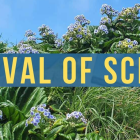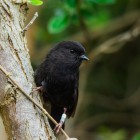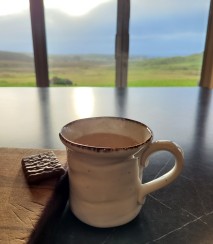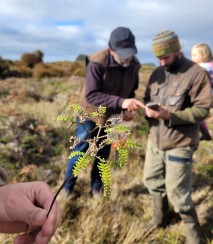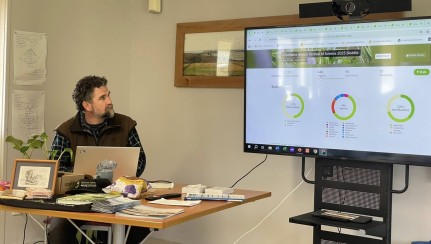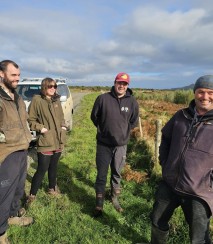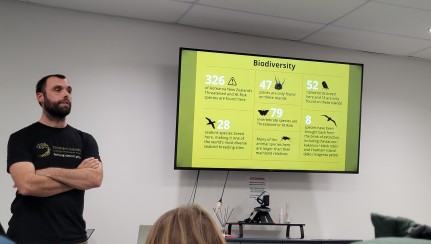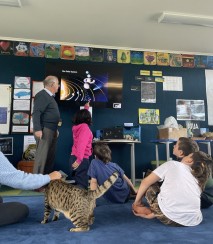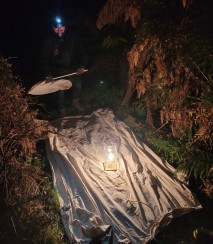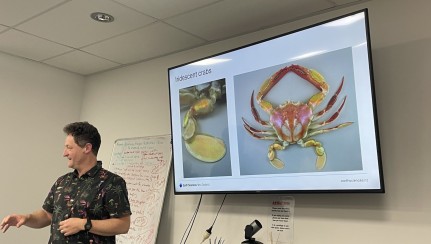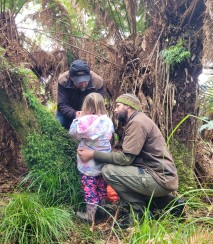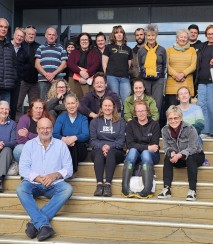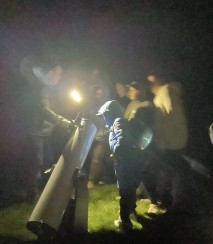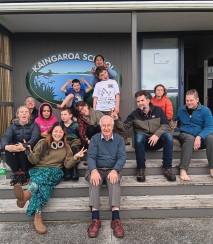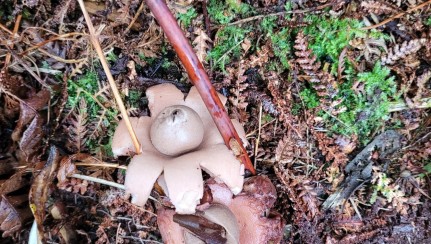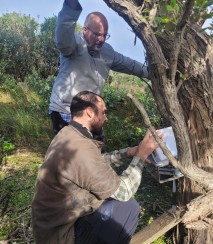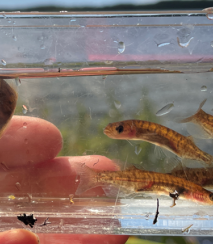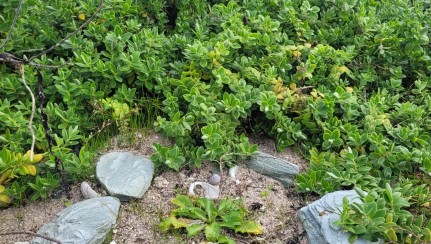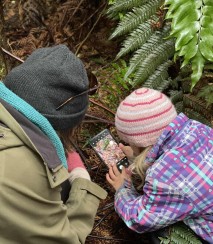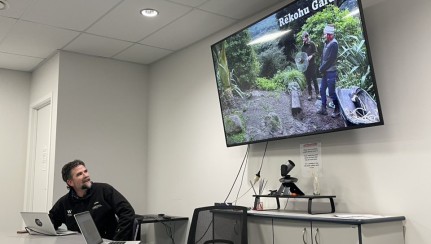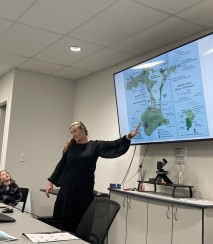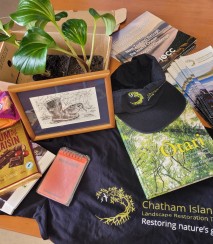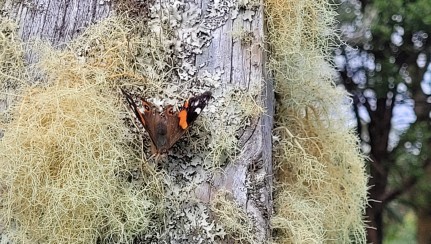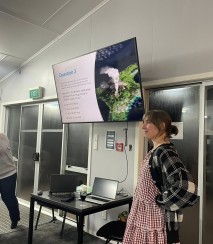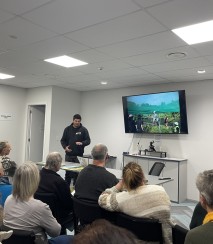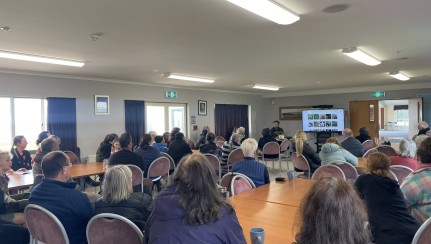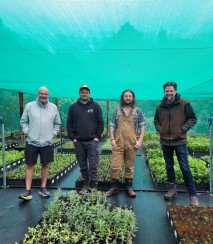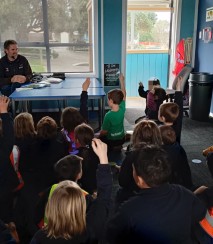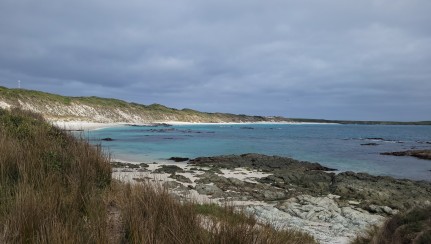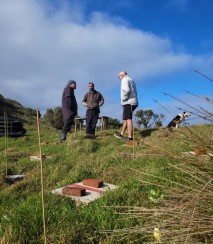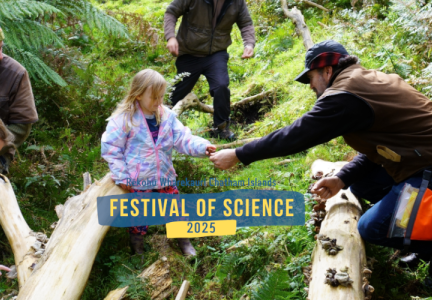
Blog and news
The scientific value of the Chatham Islands - Festival of Science 2025
From the heights of the night sky to the depths of the Chatham Rise, the Chatham Islands Festival of Science 2025 showcased the scientific value of the Chathams and its natural environment. This included nature-based activities, a celebration of our endemic plants, and a strong sense of a community focused on a sustainable future.
Tim out with Hamish and the Holmes-Green family, sharing his love of plants in Halfway Bush. Image: CILRTRT
Are plants the Chatham Islands’ Number one export?
This year, we invited Tim Park, ecologist and Manager/Kaiwhakahaere of Ōtari Native Botanic Garden and Wilton’s Bush Reserve, to speak on one of the things he knows best – plants. Tim had visited the Chathams a few times previously, and whakapapas back to the islands; he’s a descendant of Anna Dorothea and Heinrich Regnault (who respectively emigrated to and were shipwrecked on) the archipalego in the 1800s.
Iconic plants from our archipelago are found in gardens worldwide, and Tim’s talk showcased this and what it is that makes Chatham plants so popular.
The first example was the Chatham Islands garden in Ōtari, which features a range of different Chatham species, including the nikau and the very rare Lepidium rekohenuse (a species with less than ten known naturally occurring individuals). Ōtari is Aotearoa’s only public botanic garden dedicated to native plants, with a carefully catalogued collection from across the country’s territories, rather like a living museum.
A quick search online then quickly demonstrated the popularity of Chatham Island plants, from kopakopa/Chatham Island forget-me-not essence to hakapiri/akeake and Chatham Island nikau for sale in nurseries – even kopakopa at Bunnings Warehouse. Looking further afield, the UK’s Royal Horticulture Society linked to suppliers for Chatham lancewoods, hakapiri, astelia and more. Tim noted that the Chathams variety of nikau is one of the most popular for landscaping, even on mainland Aotearoa.
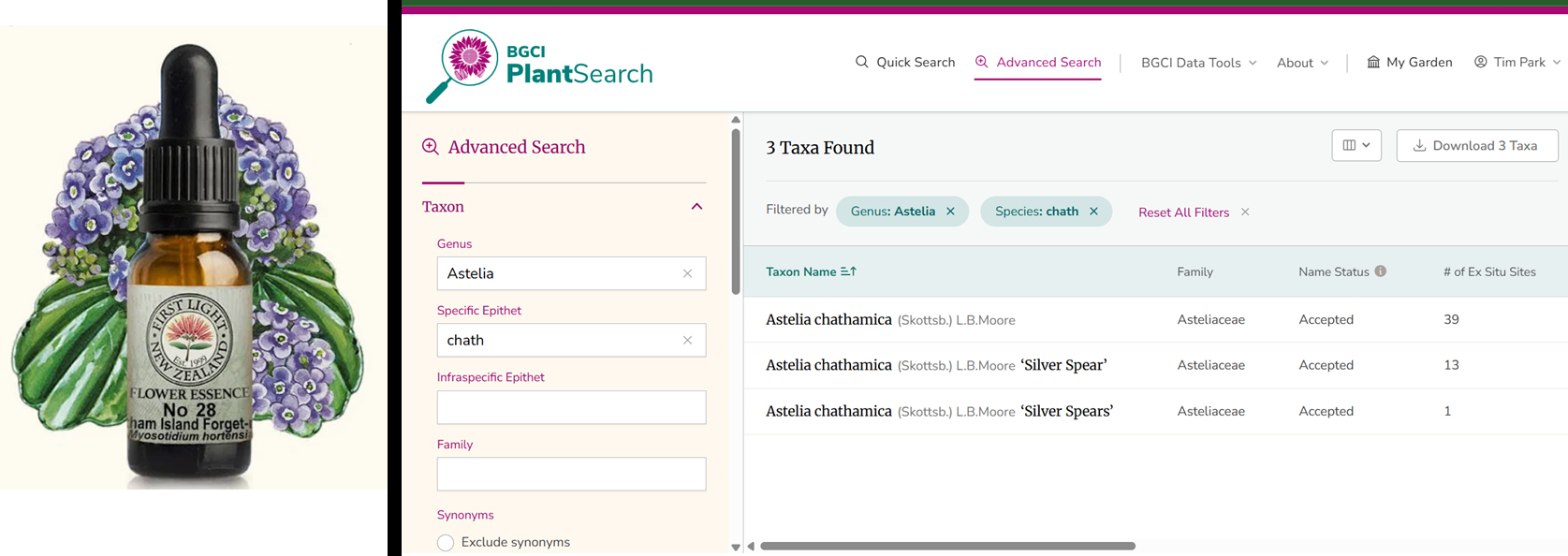
Kopakopa essence, and a listing of astelia specimens in botanical gardens globally.
Specimens from the Chathams are kept in botanical gardens internationally. According to Botanic Gardens Conservation International, Chathams species are found in Germany, France, the UK, the Netherlands, the USA, and Australia – as well as botanical gardens around Aotearoa. Astelia took it out for popularity, registered in 53 different gardens around the world, with kopakopa following behind at 28.
The resilience of these plants, used to the wild weather of an isolated island, is one of the things that makes them so interesting and attractive. Some of them are also particularly unique and visually appealing, a perfect addition to landscaping.
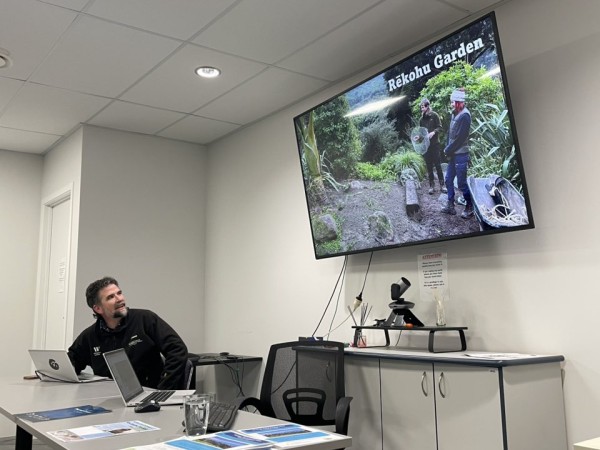
Tim's presentation about Chatham Island plants.
Getting out and about
One of the key values behind the Festival is community, and we made sure we got out into it. As well as joining Hamish, Mike, and Jess on the monthly trap service, Tim visited local plant nurseries. There are lots of plant lovers on the islands, so it was a great chance to make connections and share knowledge – and Tim left the island with a few gifted plants to add to the Ōtari collection.
Te One and Kaingaroa schools got a visit from some of the Festival speakers, including Tim, and Grace Fortune-Kelly and her supervisor Travis Ingram from the University of Otago. Grace is completing her PhD on the Chatham Island mudfish, and she managed to catch a few specimens to show the kids at Kaingaroa before releasing the rare species back into the wild.
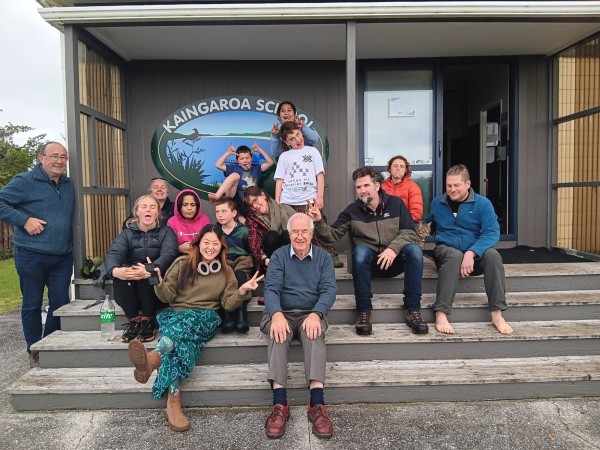
A Festival of Science activity at Kaingaroa School.
The BioBlitz was one of the big activities for this year, organised by our Trust with help from Tim. We kicked off with a “practice” on the Sunday before the Festival – the community were invited to come up to Kopi Bush Reserve to have a go at recording species using iNaturalist, with Jess and Hamish to give a demonstration of uploading and help with any questions. It's amazing how many earth stars and slaters a bunch of people – especially kids – can find in the bush in an hour.
The BioBlitz itself ran across the week, with a few keen participants on Rēkohu/Wharekauri spotting species around the island. There was some great participation by some young nature lovers. Tim identified spotprize winners at the Festival closing event on Sunday and Mike judging the overall winners after some extra time for people to upload their final observations.
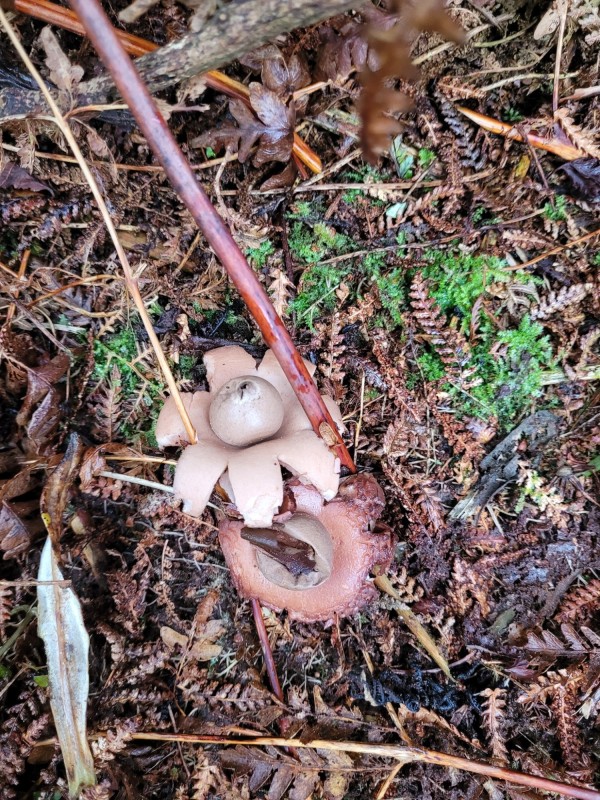
An earth star fungus discovered at Kopi Bush.
Another highlight was Quiz Night (and with Jess as one of the organisers, it was of course packed with nature-themed questions). The evening opened with a memorial to the late Professor David Johnston, who was one of the originators of the Festival, before launching into a Quiz he would have thoroughly enjoyed.
The future of our islands
The scientific value of the Chatham Islands, and the importance of the Chathams environment came through strongly in the festival talks this year. Speakers from a range of organisations and universities spoke about the rich waters to the Chatham Rise, pāua research, freshwater fish, the benefits of a dark night sky, and bees.
Richard O'Driscoll from Earth Sciences New Zealand gave a fantastic talk about some of the incredible - and unexpected - species found in the Chatham Rise, as well as the important part Chatham waters play in the country's hoki fishery.
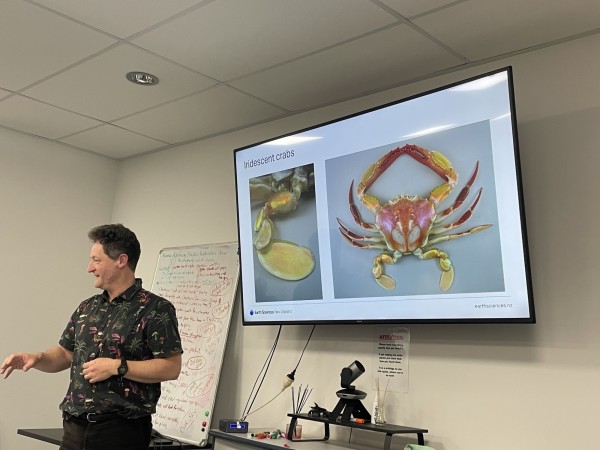
Richard O'Driscoll (Earth Sciences NZ) shows of this iridescent paddle crab found in the Chatham Rise.
Talks by three young local conservation leaders also really set out a positive future for our islands. Hamish spoke on behalf of our Trust, Levi for the Hokotehi Moriori Trust, and Jenna Hoverd on behalf of the Chatham Islands Taiko Trust. All three organisations share similar conservation goals for the future, and all three of these people have young families they’re raising on the islands.
The environmental theme of the week was also strongly underscored by Lou Sanson’s visit and participation. Former Director General for the Department of Conservation and with a long career in the environment, Lou was invited to open the Festival with a talk offering a view of how the Chatham Islands fit in global perspective.
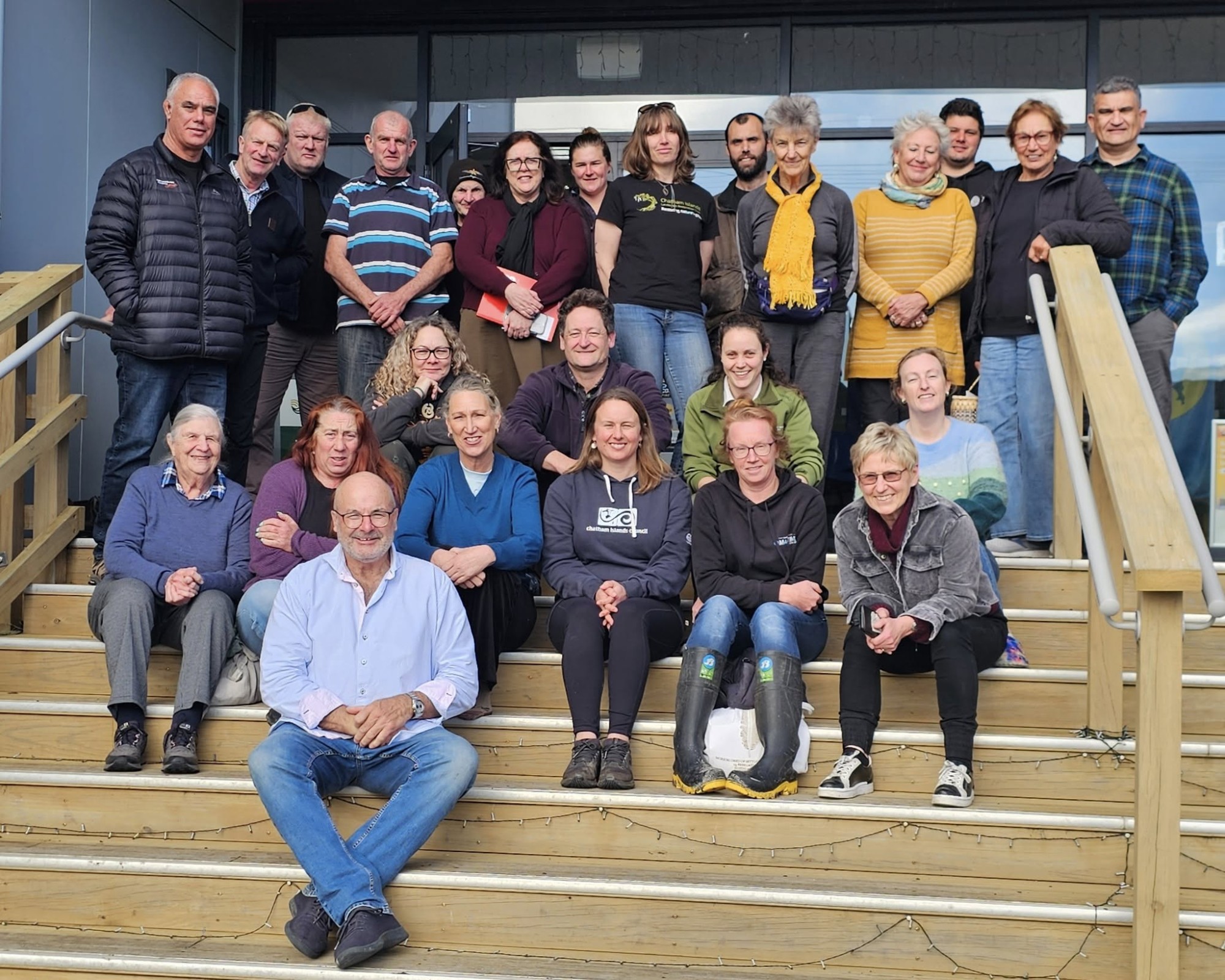
Environmental Planning Meeting, facilitated by Lou Sanson and attended widely by the community,
He also facilitated an Environmental Aspirations meeting. Open to our community, a number of locals came along to put forward their aspirations and ideas for the future of the islands. Well-attended, it was a demonstration of how keen Chatham Islanders are to get actively involved in protecting these islands – whether landowners with big dreams for their land, or others keen to volunteer their time and learn more about nature as they do.
Learn More
A huge thanks
Thanks to everyone who enabled the Festival of Science to take place!
Jackie Gurden from Tourism Chatham Islands and Alicia Cui from the Joint Centre for Disaster Research/Massey University were the main organisers – well done! – and we were honoured to work alongside them playing a bigger role this year in helping organise the Festival. Thanks to the many sponsors who helped make this come to life, including the Rātā Foundation, Air Chathams, Hotel Chathams, Whareweka/the Science House, the Den, Hokotehi Moriori Trust, Ngati Mutunga o Wharekauri Iwi Trust, Kopi Bush Retreat, Chatham Islands Council, Chatham Islands Enterprise Trust, Tarahina Honey, Chatham Islands Taiko Trust, Chatham Islands Museum, the University of Otago, Fisheries New Zealand, Earth Sciences New Zealand, the Building Research Association of New Zealand, Victoria University of Wellington, and fantastic speakers associated with Dark Sky Places.
Follow the Chatham Islands Festival of Science Facebook page for more about this year’s events and updates on the 2026 Festival, and the Tourism Chatham Islands website for more about next year or tour package opportunities.
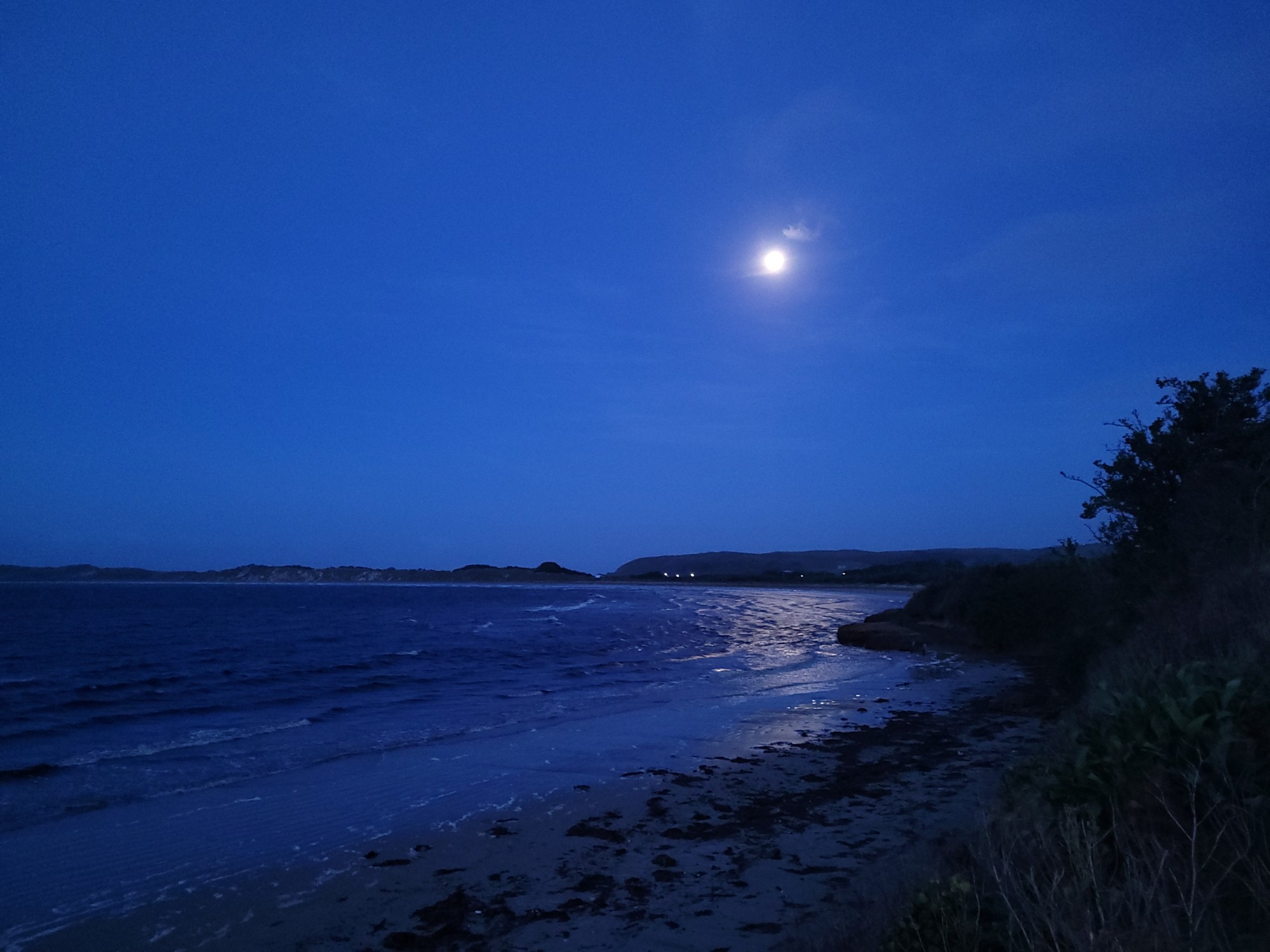
Moon rise over Waitangi. Image: CILRT

